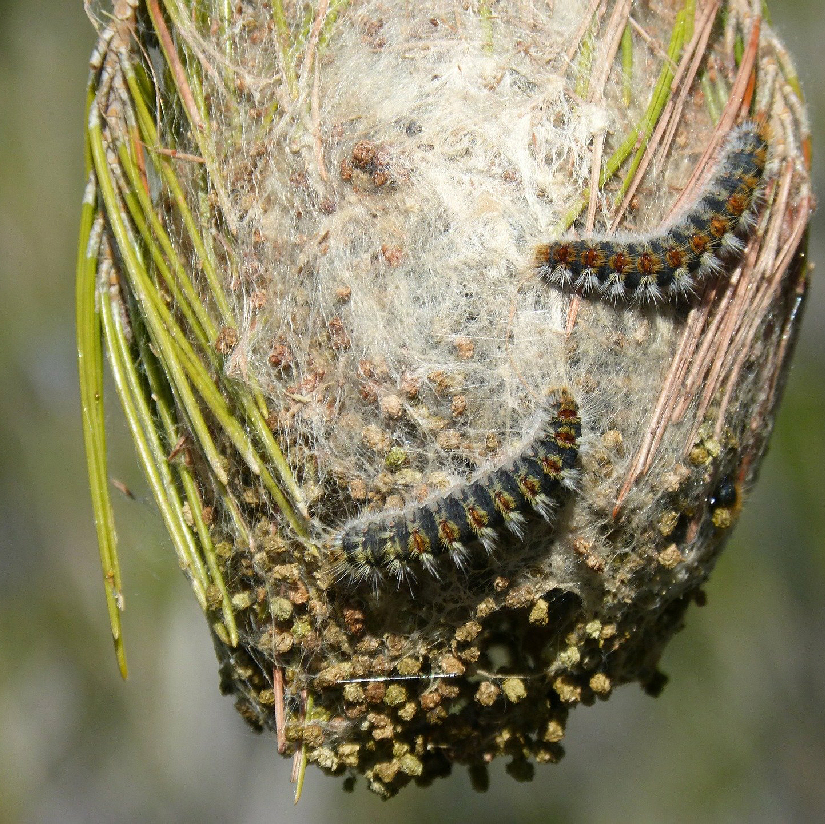
Pests Threatening UK Trees
Trees in the UK are under threat from a wide range of pests and there are several more which pose an imminent threat of entering the country. Here, we’re going to look at some of the biggest offenders.
1. Asian longhorn beetle (Anoplophora glabripennis)
Asian longhorn beetles are originally from Southeast Asia but there have been several outbreaks in Europe, including one in Kent in 2012. These pests are deadly to numerous species of broadleaved trees and the attack in the UK predominantly affected sycamores. Affected trees have broken and dead branches which have 1cm grub holes in the wood.
2. Bronze birch borer (Agrilus anxius)
Bronze birch borers attack birch trees and are native to North America. To date, it does not appear that they have reached the UK, but they have been identified as a potential threat. The larvae dig into trees where they eat the inner bark and cambium. The damage they do prevents water and nutrients travelling through the tree, causing branches to die back and ultimately killing the affected tree.
3. Pine processionary moth (Thaumetopoea pityocampa)
The larvae of pine processionary moths feed on pine tree needles and in large numbers they can cause significant defoliation. This leaves the trees weakened and vulnerable to other pests and diseases. To date, the moths have not established any known colonies in the UK.
4. Oak processionary moth (Thaumetopoea processionea)
The larvae of oak processionary moths feed on oak leaves and can completely strip trees. This leaves the trees weak and susceptible to other threats. In the UK oak processionary moths are currently limited to London.
5. Budworms (multiple species)
Budworms are the caterpillars of various species of moths. The name comes from the fact that they eat the buds of flowers and the main symptom of attack is needle loss. Budworms already infect trees in the USA and Canada where they kill large numbers of various conifer species. Although they are not yet present in the UK, this country does have a suitable climate and suitable host species so they are considered to pose a threat.
6. Horse chestnut leaf miner (Cameraria ohridella)
The larvae of horse chestnut leaf miners can cause severe damage to horse chestnut leaves causing discolouration and defoliation. The damaged leaves typically fall in autumn and the tree will grow new leaves as normal the following year. Horse chestnut leaf miners were first reported in the UK in 2002.
7. Citrus longhorn beetle (Anoplophora chinensis)
Citrus longhorn beetles come from Asia where they damage various broadleaved trees and shrubs. They have been moved around the world through the trade of ornamental trees and individuals have been intercepted arriving in the UK. So far there have not been any breeding populations established in this country. Larval beetles eat the pith and vascular systems of affected plants, damaging the roots and trunk. Their tunnels leave the plant susceptible to wind damage and diseases.
8. Eight-toothed European spruce bark beetle (Ips typographus)
These beetles attack spruce trees and are a serious pest in Europe. Recently they have been found in England. The beetles primarily attack unhealthy and weak trees but they can also attack healthy trees if conditions are right.
9. Elm zig-zag sawfly (Aproceros leucopoda)
Elm zig-zag sawflies get their name from the distinctive zig-zag pattern of the feeding damage they cause. First identified in Britain in 2017, the sawflies do not kill trees but can cause extensive defoliation making them a significant threat to the elm trees they attack.
10. Emerald ash borer (Agrilus planipennis)
Emerald ash borers attack ash trees where infestation causes trees to die back and ultimately die. They are native to Asia but have spread to North America where they are causing extensive damage. Thus far they do not appear to have arrived in the UK.
11. Great spruce bark beetle (Dendroctonus micans)
Great spruce bark beetles tunnel into the bark of spruce trees where they lay eggs and the larvae eat the inner woody layers. The damage weakens and can kill the trees it attacks. The beetles are found throughout mainland Europe and were first discovered in the UK in 1982.
12. Gypsy moth (Lymantria dispar)
Gypsy moths feed on the foliage of a range of broadleaved trees and shrubs, and can also feed on conifers when food is short. The larvae have voracious appetites and the extensive damage they do to foliage can kill affected trees. A colony was found in London in 1995 and the population has since spread.
13. Oriental chestnut gall wasp (Dryocosmus kuriphilus)
Oriental chestnut gall wasps were first found in the UK in 2015. The larvae of these wasps are the only organism known to make galls on sweet chestnut trees so infestations can be easily identified. Gall wasps don’t actually attack chestnut trees but in high numbers they can severely weaken them, making them vulnerable to other diseases and pests.
14. Pine-tree lappet moth (Dendrolimus pini)
Pine tree lappet moths are native to Europe, Russia and Asia where they cause extensive damage to plantations of pines. The defoliation they cause impairs growth and weakens trees.
15. Pinewood nematode (Bursaphelenchus xylophilus)
Infestation with pinewood nematodes causes pine wilt disease which is often fatal to pine trees. To date, pinewood nematodes have not been found in the UK.
16. Siberian coniferous silk moth (Dendrolimus sibiricus)
Siberian coniferous silk moth attacks cause large scale defoliation of coniferous trees when the larvae feed on the needles. They are widespread across Asia but have not yet been found in this country.
17. Two-spotted oak buprestid beetle (Agrilus biguttatus)
Two-spotted oak buprestid beetles are native to the UK and were formerly classified as rare. However, in recent years they have been increasingly common. The beetle larvae feed on the vasculature of oak trees and infestation has been linked to acute oak decline.
